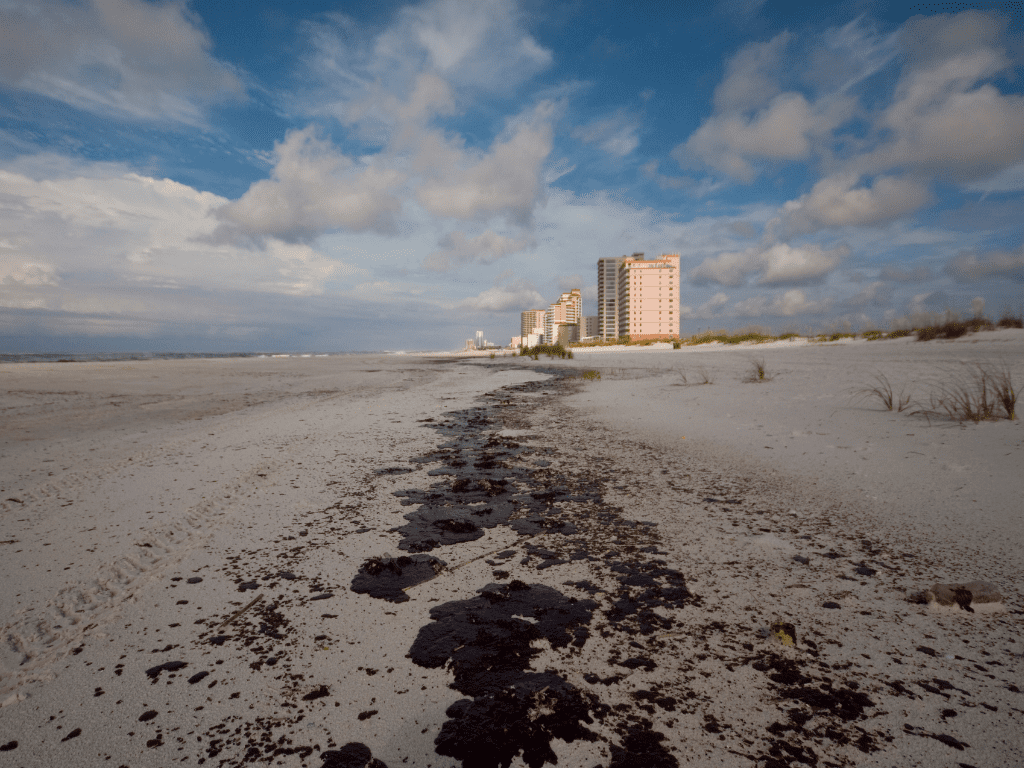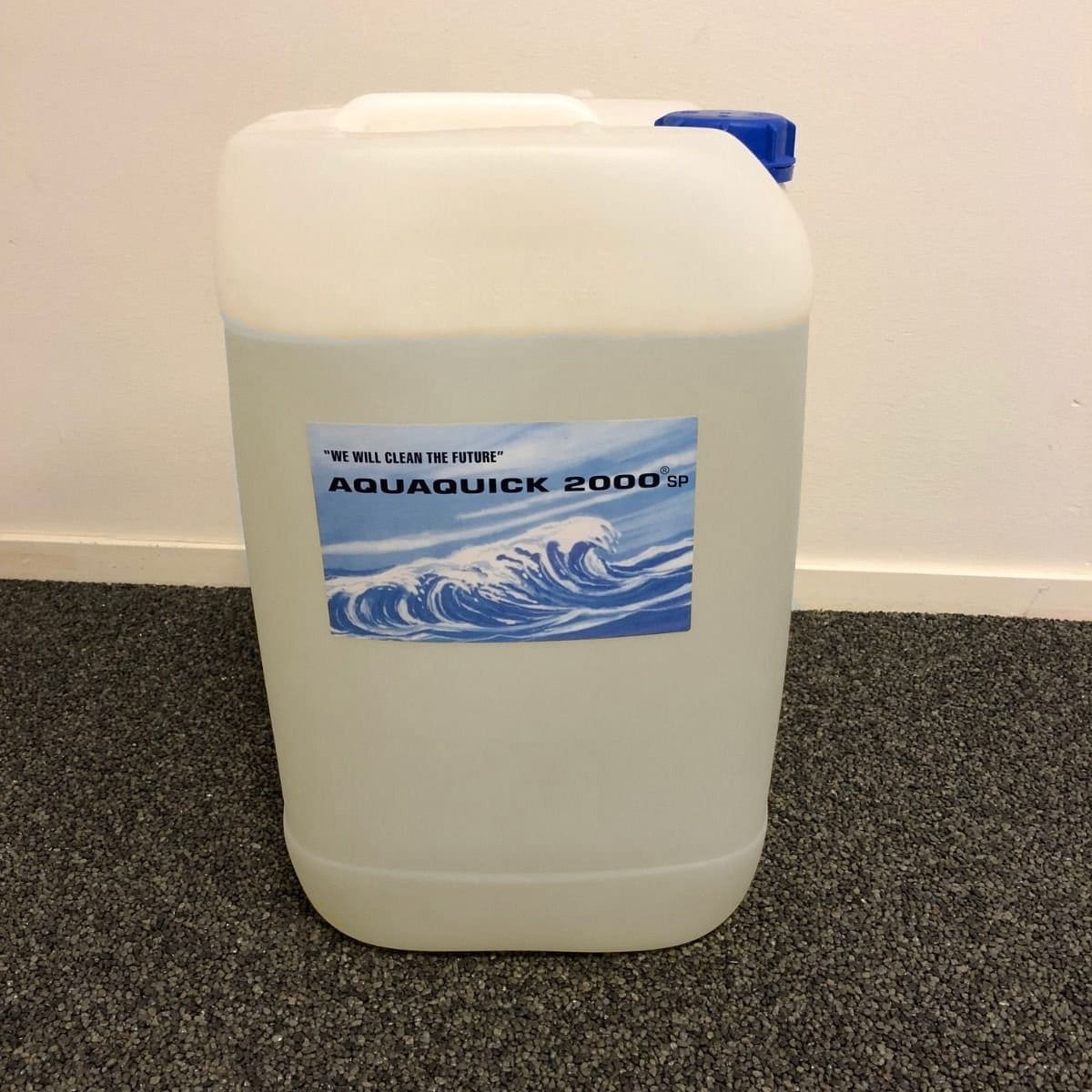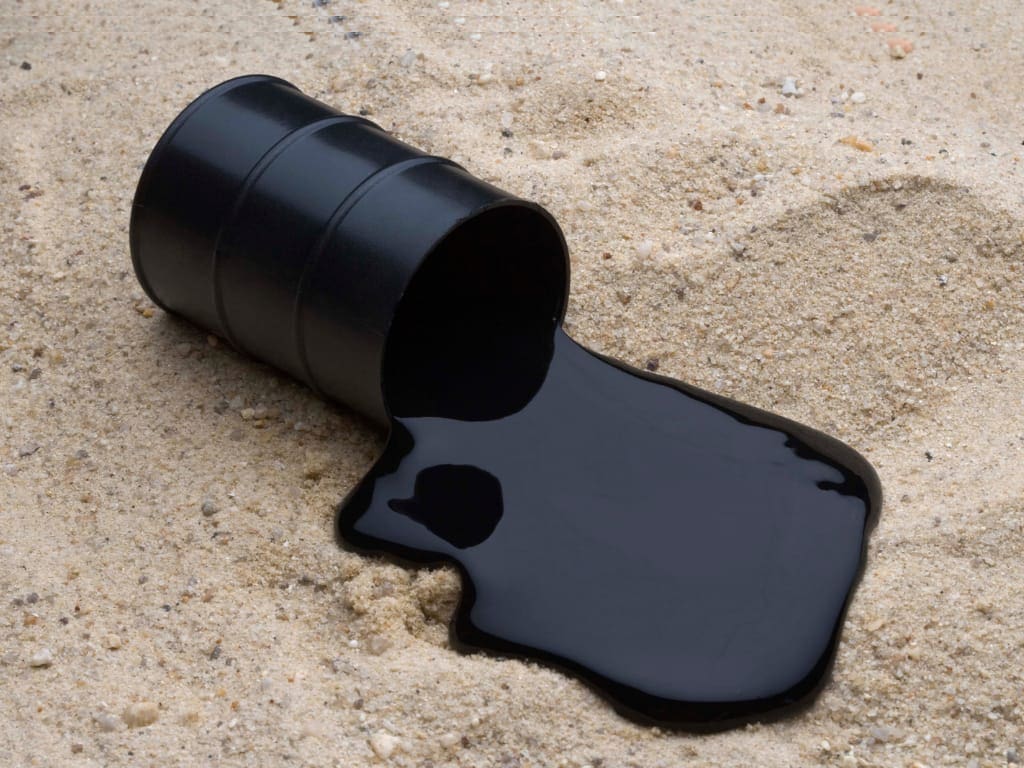Oil spill dispersants are crucial tools in the management and mitigation of environmental disasters caused by oil spills. These chemicals play a significant role in breaking down and dispersing oil slicks on water surfaces, thereby reducing the impact on marine ecosystems and coastal areas. In this comprehensive article, we will delve into the world of oil spill dispersants, exploring their functions, types, effectiveness, environmental considerations, and the importance of their proper use in response to oil spills.
What are Oil Spill Dispersants?
Oil spill dispersants are chemical agents specifically designed to break down oil into smaller droplets that can disperse more easily in water. These dispersants contain surfactants that reduce the surface tension between oil and water, allowing the oil to mix more readily with water. By breaking up large oil slicks into smaller droplets, dispersants help accelerate the natural process of biodegradation by increasing the surface area available for microbial action.
Types of Oil Spill Dispersants
There are two main types of oil spill dispersants: chemical dispersants and biological dispersants. Chemical dispersants are synthetic compounds formulated to break down oil through chemical reactions. They are typically composed of surfactants, solvents, and other additives that enhance their effectiveness. Biological dispersants, on the other hand, utilize naturally occurring microorganisms to degrade oil. These products contain specific strains of bacteria or enzymes that can metabolize hydrocarbons present in crude oil.
Different Types of Oil Spill Dispersants
Oil spill dispersants are complex mixtures of surfactants and solvents designed to break down oil slicks following maritime accidents. These chemical agents help reduce the negative impacts of oil spills on marine ecosystems and coastlines by facilitating the biodegradation of oil. Dispersants come in various formulations, tailored to suit specific oil types and environmental conditions.
Generational Classifications
Oil spill dispersants are often categorized based on their development history:
- First Generation: Introduced in the 1960s, these dispersants resembled industrial cleaners and degreasers, containing high levels of aquatic toxicity. First-generation dispersants are no longer used due to their environmental concerns.
- Second Generation (Type I): Designed primarily for open ocean usage, second-generation dispersants consist of hydrocarbon solvents with low or no aromatic content and typically 15 to 25% surfactant. These dispersants are usually applied undiluted.
- Third Generation: Comprising blends of two or more surfactants combined with glycol and light petroleum distillate solvents, third-generation dispersants offer improved performance compared to earlier versions. Their surfactant concentrations lie between 25% and 65%, which is higher than with Type I products.
Formulations Based on Application Method
Oil spill dispersants can also be divided into two primary formulations based on their mode of application:
Conventional Type
Consisting mainly of non-aromatic hydrocarbon solvents, these dispersants are commonly used for shoreline cleaning operations. They are applied undiluted at the site of application, with typical dosages ranging from 30% to 100% per unit of oil spill.
Concentrated Type
Containing oxygenates like glycol and non-aromatic hydrocarbons, concentrated dispersants can be used after dilution or directly from ships and aircrafts. Typically, the dosage of concentrated dispersants ranges from 5% to 15% per unit of oil spill.
The choice of dispersant depends on numerous factors, including the type of oil, weather conditions, distance from the shore, and the presence of marine species in the affected region. Laboratory testing is often employed to compare the effectiveness of dispersants against specific oil types, ensuring optimal selection for each unique situation.
Advantages and Disadvantages of Using Conventional Type Dispersants
Oil spill response strategies often involve the use of conventional type dispersants, which are a mixture of non-aromatic hydrocarbon solvents primarily used for shoreline cleanup operations. These dispersants, while effective in certain scenarios, come with their own set of advantages and disadvantages.
Advantages
- Effectiveness in Strong Currents and Rough Seas: Conventional dispersants can be used in challenging marine conditions, including strong currents and rough seas, making them versatile tools for combating oil spills in dynamic environments.
- Reduction of Water Contamination: By removing oil from the water surface, conventional dispersants help reduce contamination of water birds and marine animals, thereby minimizing the impact on aquatic ecosystems.
- Prevention of Shoreline Contamination: These dispersants can prevent the carryover of oil by wind to shorelines and beaches, limiting the spread of oil pollution to coastal areas.
- Quick Response: Using conventional dispersants is one of the fastest methods to combat an oil spill, restricting the formation of oil-water emulsions and facilitating rapid dispersion of oil.
Disadvantages
- Toxicity Concerns: While effective in dispersing oil, conventional dispersants may have toxic effects on marine life and ecosystems. The potential toxicity of these dispersants, either alone or when mixed with oil, raises environmental concerns.
- Persistence in Water Column: Some studies suggest that dispersants can persist in the water column for extended periods, leading to long-term environmental impacts rather than quick breakdown as anticipated.
- Trade-off Between Toxicity and Cleanup: The use of conventional dispersants involves a trade-off between toxicity to aquatic life and the benefits of preventing large slicks from contaminating coastal ecosystems. Balancing these factors is crucial in decision-making during oil spill responses.
In conclusion, while conventional type dispersants offer advantages such as effectiveness in challenging conditions and quick response times, they also pose challenges related to toxicity and long-term environmental effects. Careful consideration of these advantages and disadvantages is essential when selecting dispersant strategies to minimize the impact of oil spills on marine environments.
Effectiveness of Oil Spill Dispersants
Oil spill dispersants have been shown to be effective in reducing the impact of oil spills on marine environments. By breaking down oil into smaller droplets, dispersants prevent the formation of thick surface slicks that can coat and smother marine life. This allows for a more rapid dispersion and dilution of oil in the water column, minimizing direct contact with sensitive organisms such as seabirds, fish, and marine mammals.
The long-term effects of using conventional type dispersants in oil spill response efforts can have both environmental and ecological implications. While these dispersants are effective in breaking down oil slicks and preventing contamination of shorelines, they also present certain challenges and potential consequences over time.
1. Increased Bioavailability of Oil
Dispersants can increase the bioavailability of oil in the water column, potentially exposing aquatic organisms to petroleum hydrocarbons for longer periods. This prolonged exposure may lead to adverse effects on marine life and ecosystems.
2. Toxicity Concerns
Dispersants themselves can be toxic to a wide range of organisms, including crustaceans, fish, corals, mollusks, and algae. The use of dispersants may introduce additional hazards to marine life, affecting various non-microbial taxa in the ecosystem.
3. Effect on Microbial Communities
Dispersants can influence microbial communities in the water column, potentially altering ecological systems. While some studies suggest that oil spill dispersants can enhance oil biodegradation by increasing the surface area available for microbial action, there are conflicting reports on the overall impact of oil spill dispersants on microbial communities.
4. Unknown Long-Term Consequences
The long-term consequences of using conventional type dispersants need further research and understanding. Studies have indicated that the persistence of dispersant components in the environment and their potential effects on ecosystems require continued investigation to assess their full impact.
While conventional type dispersants play a crucial role in oil spill response by breaking down oil slicks and preventing shoreline contamination, their long-term effects on marine environments raise important concerns. Monitoring and research efforts are essential to better understand the lasting consequences of using these dispersants and to develop strategies that minimize environmental harm while effectively responding to oil spills.
Cleanup Strategies Using Conventional Oil Spill Dispersants
Cleaning up oil spills requires a strategic approach involving multiple techniques, including the use of conventional type dispersants. These dispersants, made from non-aromatic hydrocarbon solvents, are particularly useful in addressing oil spills under challenging conditions, such as strong currents and rough seas. Here’s a step-by-step guide outlining the key elements of cleaning up oil spills using conventional type dispersants.

Preparation
Before applying dispersants, ensure you have all necessary equipment and materials ready, including personal protective gear, appropriate vessels for mixing and storage, and adequate quantities of dispersants. Consult local regulations and guidelines regarding the use of dispersants in your jurisdiction.
Assessment
Assess the extent of the oil spill, its location, and the prevailing weather conditions. Determine whether dispersants would be suitable for the given circumstances, considering factors such as the size of the spill, the type of oil, and the proximity to sensitive habitats and populations.
Selection of Appropriate Dispersant
Choose the most suitable dispersant for the specific oil type and environmental conditions. Familiarize yourself with the properties and characteristics of the selected dispersant, including its concentration, application rate, and any special handling requirements.
Mixing and Dilution
Mix the chosen dispersant according to manufacturer instructions, taking care not to exceed recommended concentrations. If required, dilute the dispersant solution with water before application. Ensure that the final product meets the specified criteria for viscosity, pH, and temperature.
Application
Apply the dispersant solution to the oil slick using appropriate equipment, such as spray bars mounted on boats or fixed platforms. Aim to achieve uniform coverage across the entire oil slick without creating excessive foam. Adjust the application method and rate depending on the size of the spill and environmental conditions.
Monitoring and Evaluation
Monitor the progress of the dispersant application continuously, tracking changes in the oil slick’s appearance, thickness, and movement. Regularly evaluate the effectiveness of the dispersant application, adjusting the strategy if necessary. Document the results of monitoring activities for later analysis and reporting purposes.
Post-Application Management
After completing the initial dispersant application, monitor the dispersed oil and any remaining residues. Implement secondary cleanup measures, such as skimming or mechanical recovery, to remove any remaining oil from the water surface. Continue to observe the dispersed oil until it has dissipated or reached acceptable levels.
Safety Precautions
Ensure that personnel involved in oil spill dispersant applications wear appropriate personal protective equipment, including gloves, masks, and eyewear. Follow safe work practices and procedures, avoiding skin contact with dispersants wherever possible. Store unused oil spill dispersants securely away from sources of ignition and in accordance with local regulations.
By following these steps, you can successfully implement a cleanup strategy utilizing conventional type dispersants. Remember always to consult local authorities and regulatory bodies for guidance on the use of dispersants within your jurisdiction. With careful planning and execution, conventional type dispersants can significantly improve the efficiency of oil spill cleanup efforts.
Environmental Considerations
While oil spill dispersants can be effective in mitigating the immediate impacts of spills, their use raises important environmental considerations. Dispersants can introduce additional chemicals into the marine environment, potentially affecting aquatic life and ecosystems. It is essential to carefully assess the potential risks and benefits of using dispersants in each spill scenario and to follow strict guidelines for their application to minimize adverse effects on the environment.
Importance of Proper Use
Proper use of oil spill dispersants is critical to maximizing their effectiveness while minimizing environmental harm. It is essential to apply dispersants early in the response effort when oil slicks are still relatively fresh and before they have spread extensively. Additionally, dispersant application should be targeted at specific areas where it can have the greatest impact on reducing environmental damage.
Why AQUAQUICK 2000 Is The Perfect Oil Spill Dispersant?
AQUAQUICK 2000, as an oil spill dispersant, offers several advantages that distinguish it from other dispersants in the market:
Efficiency in Heavy Oil Cleanup

AQUAQUICK 2000 has been successfully used for heavy oil spill cleanups in Malaysia, demonstrating its effectiveness in handling challenging spills with heavy oil stains and sludge.
Versatility and Surface Restoration
This dispersant is known for its versatility, being applicable not only for oil spill cleanups but also for restoring oil-soaked surfaces to their original condition. Its ability to clean industrial machinery effectively showcases its diverse applications.
Environmental Friendliness
AQUAQUICK 2000 is designed to minimize environmental impact while effectively dispersing oil. Its environmentally friendly approach makes it a preferred choice for cleanup operations where reducing ecological harm is a priority.
Proven Track Record
With successful oil spill cleanup demonstrations in Germany and long-standing use in Malaysia, AQUAQUICK 2000 has established itself as a reliable and effective dispersant in real-world scenarios.
Biodegradability Enhancement
By breaking down oil into small droplets that are more easily biodegraded by natural microbes, AQUAQUICK 2000 aids in the natural remediation process, enhancing the overall cleanup efficiency.
In comparison to other dispersants, AQUAQUICK 2000 stands out for its proven effectiveness in heavy oil cleanup, versatility in surface restoration, environmental friendliness, and track record of successful applications. These qualities make it a valuable asset in combating oil spills and minimizing their impact on marine environments and coastal areas.
Final Thoughts
Oil spill dispersants are valuable tools in the response to oil spills, helping to mitigate environmental damage and protect marine ecosystems. By understanding their functions, types, effectiveness, environmental considerations, and importance of proper use, responders can make informed decisions when faced with oil spill incidents. As we continue to navigate the challenges posed by oil spills, it is crucial to prioritize the responsible use of dispersants to safeguard our oceans and coastal areas for future generations.














